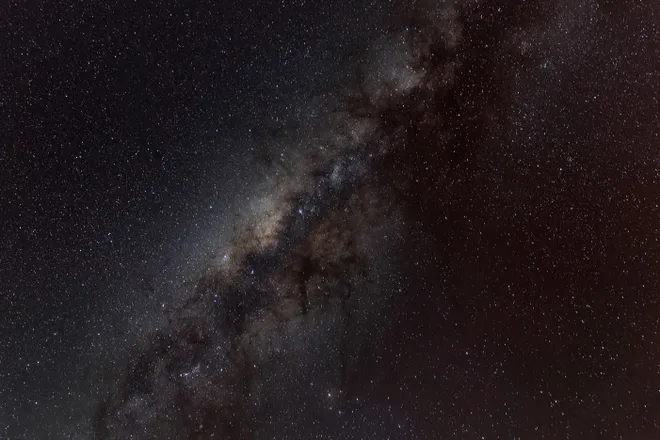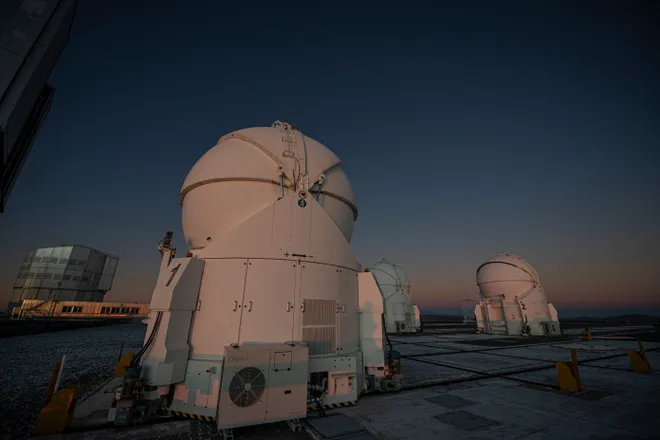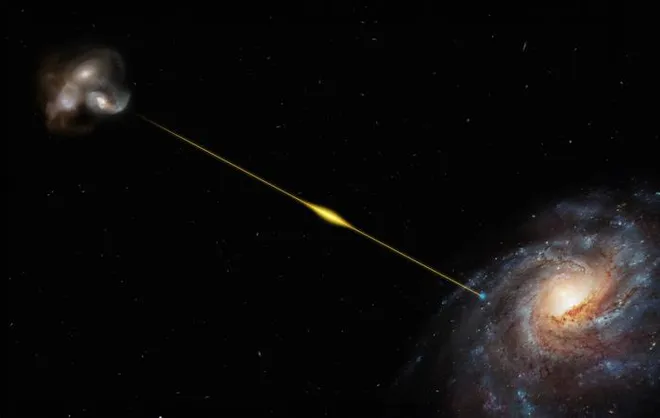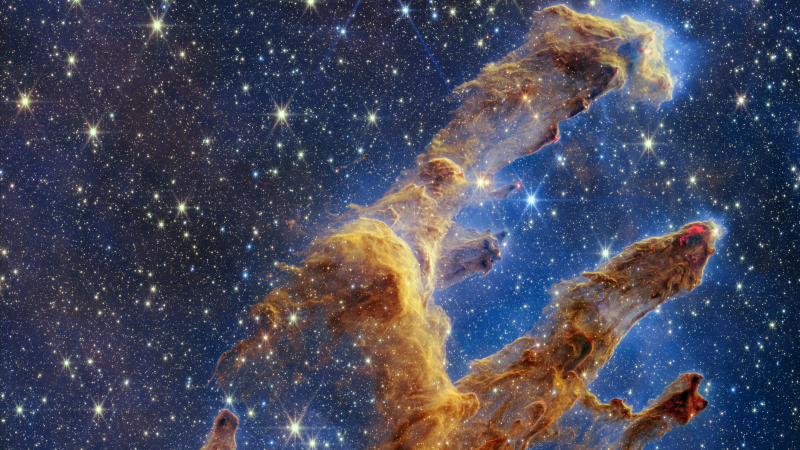A radio burst traveled 8 billion years to reach Earth. It's the farthest ever detected.
For 8 billion years, a burst of radio waves packing more energy than what the sun produces in three decades made its way across the farthest reaches of the cosmos before its light finally reached Earth.
Fortunately, astronomers using a radio telescope in Australia were able to detect the elusive signal, which lasted less than a thousandth of a second in June 2022.
Astronomers have been studying these fast radio bursts, or FRBs, from across the universe since 2007, when the first millisecond-long burst was discovered. While more of these cosmic flashes have been detected since then, researchers concluded in a study published last week in the journal Science that this one was the most distant and most powerful ever observed.
“While we still don’t know what causes these massive bursts of energy, the paper confirms that fast radio bursts are common events in the cosmos," study co-author Ryan Shannon, an astrophysicist at Swinburne University of Technology in Australia, said in a statement. "We will be able to use them to detect matter between galaxies, and better understand the structure of the universe."

Asteroid study:Asteroid known as Polyhymnia may contain 'superheavy' elements unknown to humans
Explanation for fast radio bursts eludes astronomers
The exact cause behind the phenomenon remains a mystery to astronomers even 16 years after the first fast radio burst was discovered.
It may be enticing to theorize that the radio waves could be extraterrestrials attempting to communicate with earthlings, but scientists suspect that distant dead stars called magnetars are more likely the culprit. With their extremely strong magnetic fields, these neutron stars are capable of producing powerful bursts of energy such as what astronomers recently documented.
These fast radio bursts are notoriously tricky to observe since they only last a few milliseconds before disappearing. However, radio telescopes have helped astronomers intercept these cosmic flashes, including the one observed last June. Named FRB 20220610A, it was found to have released as much energy as the sun emits in 30 years.
"That is enough power to microwave a bowl of popcorn about two times the size of the sun," Shannon told New Scientist.
Shannon and his colleagues were able to capture evidence of the radio burst by using the Australian Square Kilometre Array Pathfinder radio telescope. To determine where the blast of radiation came from, the researchers turned to the Very Large Telescope in Chile.
Those findings revealed that the radio burst likely originated from within a small group of merging galaxies in the process of forming new stars.

Psyche mission:What to know about NASA's long-awaited trip to a strange metal asteroid
Studying radio bursts may help explain universe

Astronomers have pinpointed the origins of about 50 fast radio bursts to date, but the study's authors suggest that around 1,000 more are waiting to be uncovered — some at even greater distances.
The radio telescope in Australia has been used to discover nearly half of the fast radio bursts and remains the best tool available to astronomers, according to the research team. However, the study's authors said they hope that future more advanced radio telescopes — such as those under construction in Western Australia and South Africa — will enable astronomers to find even older and more distant cosmic flashes.
Understanding and studying these radioactive blasts, researchers claim, should help scientists better understand the universe, and measure missing matter between galaxies.
“If we count up the amount of normal matter in the universe — the atoms that we are all made of — we find that more than half of what should be there today is missing,” Shannon said. “We think that the missing matter is hiding in the space between galaxies, but it may just be so hot and diffuse that it’s impossible to see using normal techniques.”

Eric Lagatta covers breaking and trending news for USA TODAY. Reach him at elagatta@gannett.com

Disclaimer: The copyright of this article belongs to the original author. Reposting this article is solely for the purpose of information dissemination and does not constitute any investment advice. If there is any infringement, please contact us immediately. We will make corrections or deletions as necessary. Thank you.





